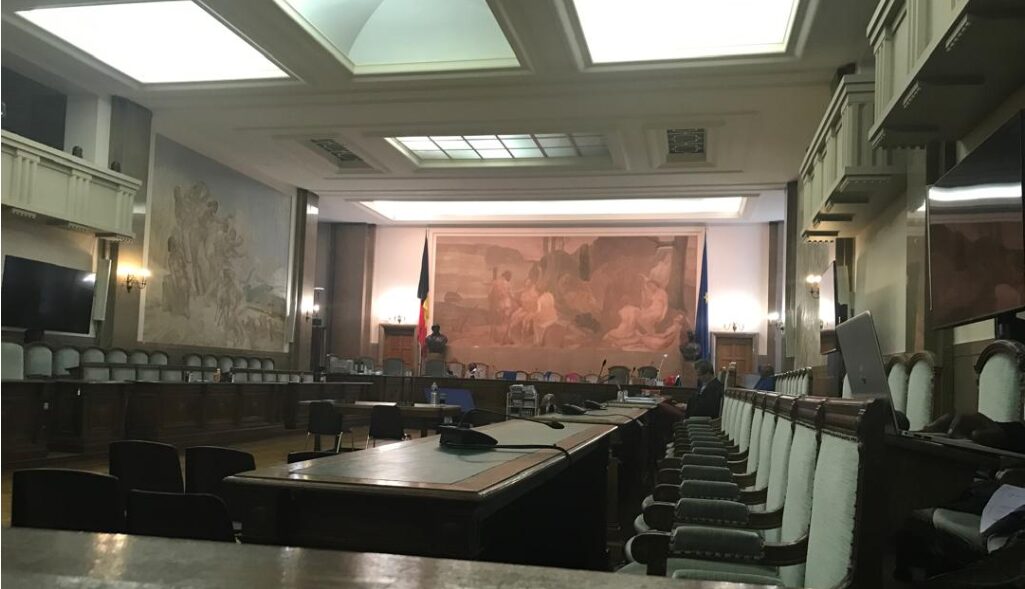
In the Brussels court of Assizes, the courtroom where Nkunduwimye appears
In several trials involving suspects of the 1994 Genocide against Tutsi, cases of Interahamwe leaders who sheltered a group of fellow malefactors are recurrent.
Most of Interahamwe militiamen grouped around their leaders for briefing and training, but a witness in Brussels Court of Assizes said that some of them would sometimes come to seek refuge from their boss.
In a trial involving prosecution against Nkunduwimye Emmanuel who is charged with two counts including Genocide and war crimes, a witness who is also a genocide survivor said that he happened to be in the Interahamwe strongholds.
A trader at that time who is actually still in the business at 69, the witness was in Kigali when the Genocide started. He joined his neighbors who were trying to counter attack the Interahamwe militia who wanted to exterminate the Tutsi. Their Hutu neighbors joined them for this defence, until the killers corrupted them.
On April 15, his former houseboy who “had become the bodyguard of Robert Kajuga, national president of Interahamwe learnt that I was hiding and came to see me.”
On that day, his houseboy took him to Rutaganda’s business, the Amgar garage that was located in Gitega, Nyarugenge district, near a renowned workshop called Gakinjiro. It is alleged that he co-owned the garage with Nkunduwimye who is also known under his alias of Bomboko.
The later, he said, wore military uniform and had a gun.
“Interahamwe referred to this place as their headquarters,” said the witness who added that he saw a lot from his hiding place.
“There were many interahamwe who were sheltered at the garage as refugee who had fled the place where the Rwanda Patriotic Army(RPA) had taken,” said the witness.
“They would go out during the day and come back later. I cannot tell what happened outside of that hiding place, but at least I know what happened around me. I was fortunate that Rutaganda accepted to call me a Hutu and ordered that I should be protected.”
The witness testified that at the gate of the garage was a roadblock that was meant to identify the Tutsi among the passers-by, and in the backyard, he could hear the militia digging pits which they transformed into mass graves for the Tutsi they were killing.
“I remember telling Rutaganda: but all those people being killed and dumped in your land, don’t you think that you will be held accountable?” he recalls.
“With this, Rutaganda bought many iron sheets and put a much stronger fence to prevent people in Amgar from seeing what was happening in the backyard.”
The witness who was hiding from Amgar and his family in another family would later on continue to go from a hideout to another until July 7,1994 when Kigali was liberated.
On July 11, they miraculously met again and returned home.

